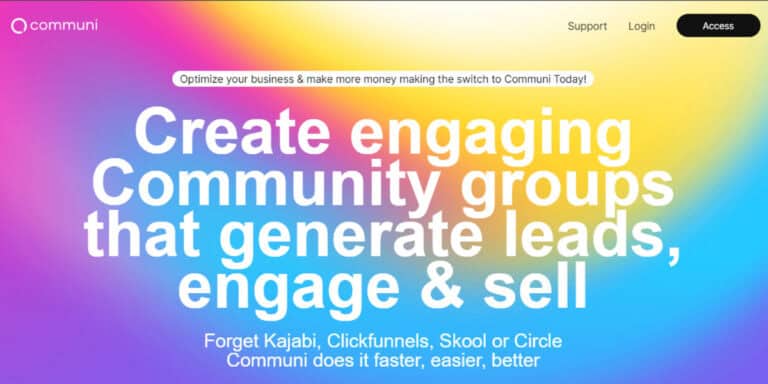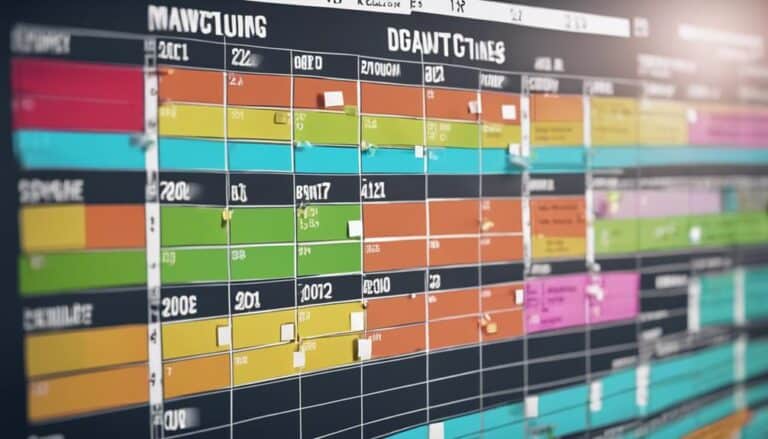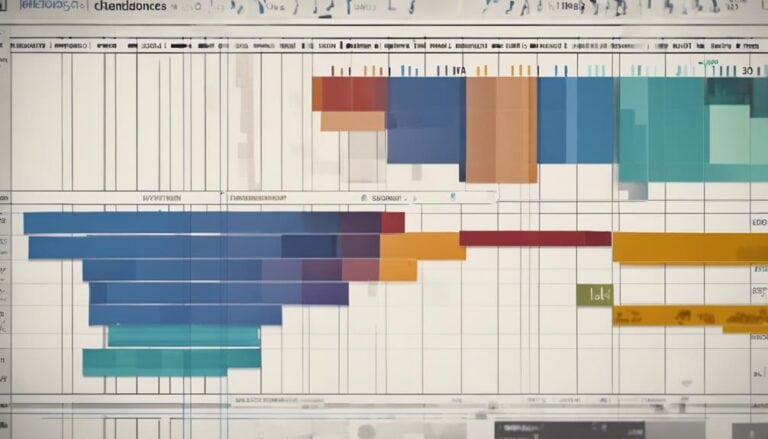When embarking on the project planning journey, think of Agile as a nimble dancer effortlessly adjusting their steps to the rhythm of the music, while Waterfall moves in a predetermined choreographed routine.
But why should you consider Agile over Waterfall? The answer lies in the ability to navigate unpredictable project terrains with grace and efficiency.
By embracing Agile, you unlock a world where adaptability reigns supreme, making it the go-to choice for those seeking a dynamic and collaborative project planning experience.
Key Takeaways
- Agile allows for adaptability to changing project requirements, unlike the rigid structure of Waterfall.
- Stakeholder engagement and collaboration are prioritized in Agile, ensuring alignment and transparency.
- Iterative development in Agile enables continuous improvement and timely issue resolution.
- Agile emphasizes product quality through integrated testing and feedback loops, meeting customer expectations effectively.
Agile Flexibility Vs. Waterfall Rigidity
Emphasizing adaptability over rigidity, Agile methodology allows project teams to iteratively respond to evolving requirements and feedback, contrasting sharply with the linear and inflexible nature of the Waterfall model. In Agile, the project requirements are treated as dynamic entities that can evolve throughout the project’s lifecycle. This flexibility enables teams to adjust priorities based on changing needs and insights, fostering a more responsive and client-focused approach. On the other hand, Waterfall’s rigid sequential structure demands that all requirements be defined upfront, often leading to challenges when adapting to new information or shifting priorities.
Within Agile projects, teams embrace a collaborative mindset, sharing skill sets and knowledge to achieve common goals. This collective approach not only enhances communication and cohesion but also ensures that the project benefits from diverse perspectives and expertise. In contrast, Waterfall’s siloed approach can hinder effective collaboration and knowledge sharing, potentially impeding progress and innovation within the project. By prioritizing adaptability and teamwork, Agile methodology empowers project teams to navigate uncertainties and complexities with agility and efficiency.
Speed of Delivery
With Agile methodology’s focus on speed and adaptability, the delivery of working software is significantly accelerated through iterative processes and continuous feedback loops. Agile is better suited for rapid software delivery as it breaks down projects into smaller tasks, allowing teams to work in short bursts known as sprints. This iterative approach ensures that incremental updates are consistently delivered, maintaining a steady pace of progress.
By incorporating continuous feedback loops, Agile enables teams to adapt quickly, adjust course as needed, and deliver value at a faster rate compared to the sequential nature of Waterfall methodology. Project timelines are expedited with Agile due to its emphasis on collaboration, client involvement, and regular feedback loops, which enhance decision-making processes and overall project delivery efficiency.
This accelerated pace of software delivery is a key advantage of Agile over Waterfall for project planning.
Iterative Vs. Sequential Approach
Opting for an iterative approach in project planning allows for continual adjustments and feedback, ensuring adaptability and efficiency throughout the project lifecycle. Agile methodologies, known for their iterative nature, prioritize constant feedback loops and adjustments. This approach enables teams to respond promptly to changes, ensuring that the project remains aligned with stakeholder expectations. In contrast, the sequential approach of Waterfall methodology can lead to rigidity in project planning. With Waterfall, each phase must be completed before moving on to the next, potentially causing delays and difficulties in incorporating feedback.
Agile’s emphasis on adaptability and feedback fosters collaboration among team members with shared skill sets. This collaborative environment enhances problem-solving capabilities and promotes a culture of continuous improvement. In contrast, Waterfall’s more structured and linear progression can limit adaptability, making it challenging to accommodate new information or changes during the project lifecycle.
Stakeholder Collaboration
When it comes to stakeholder collaboration in Agile projects, your active involvement is crucial.
By providing timely feedback and insights throughout the project, you contribute to enhancing the overall outcomes.
This continuous engagement fosters transparency, trust, and a shared understanding of project goals among all stakeholders.
Active Stakeholder Involvement
Active stakeholder involvement in Agile methodology ensures continuous collaboration and feedback throughout the project lifecycle. This involvement plays a crucial role in providing real-time input, clarifying requirements, and validating deliverables. In Agile, stakeholders actively participate in iterative reviews, contributing to better decision-making processes and increased transparency.
This collaborative approach allows for adjustments to be made promptly, aligning the project with stakeholders’ expectations and ensuring effective value delivery. By engaging stakeholders in discussions and incorporating their feedback, Agile teams can maintain a shared understanding of project progress and goals. This level of involvement not only fosters a sense of ownership among stakeholders but also enhances the overall quality of the final product.
Making Agile a preferred choice for projects requiring adaptability and stakeholder satisfaction.
Timely Feedback Incorporation
To ensure the seamless integration of timely feedback from stakeholders in Agile project planning, a structured approach to collaboration is essential. Agile methodology thrives on stakeholder collaboration, allowing for quick feedback loops that enable adjustments based on their input.
This iterative approach not only fosters continuous stakeholder involvement but also leads to better project outcomes by ensuring alignment with their evolving needs. By keeping stakeholders engaged throughout the project, Agile facilitates the adaptation to changing requirements and priorities efficiently.
The emphasis on timely feedback incorporation and stakeholder collaboration in Agile project planning is strategic, ensuring that the project stays on track and delivers results that meet stakeholders’ expectations.
Adaptability to Change
Amidst the dynamic nature of project environments, Agile methodology shines by fostering continuous adaptation to shifting requirements throughout the project lifecycle. Unlike Waterfall, where changes are difficult to implement once the project is underway, Agile encourages teams to change course as needed, ensuring that the final product meets stakeholders’ evolving needs. Below is a comparison table illustrating how Agile and Waterfall approaches differ in their adaptability to change:
| Criteria | Agile | Waterfall |
|---|---|---|
| Flexibility | Agile allows for flexibility in adjusting to changing requirements. | Using Waterfall, changes are challenging to incorporate once the project is in motion. |
| Responsiveness | Agile enables quick responses to new information and market conditions. | Waterfall follows a sequential process, limiting the ability to adapt swiftly. |
| Stakeholder Engagement | Agile emphasizes collaboration and communication for better alignment with stakeholders. | Waterfall focuses on predefined requirements, proceeding to the next phase without much stakeholder involvement. |
| Project Success | Agile’s adaptability results in higher customer satisfaction and alignment with evolving business needs. | Waterfall’s rigidity may lead to dissatisfaction and misalignment with stakeholder expectations. |
Continuous Improvement and Feedback
Continuous improvement and feedback in Agile methodology drive iterative cycles of development, fostering a culture of learning and adaptation for enhanced outcomes and team collaboration. Agile’s focus on feedback loops allows project teams to gather real-time information and make necessary adjustments promptly.
This continuous feedback mechanism enables teams to refine their processes, leading to higher quality outcomes in product development. By incorporating feedback loops, Agile empowers project teams to engage stakeholders throughout the project, ensuring that the final products meet customer needs and expectations effectively.
The iterative nature of Agile promotes ongoing refinement, enhancing innovation and responsiveness to evolving market demands. Embracing feedback in Agile methodology not only facilitates product improvement but also nurtures a collaborative environment where team members learn from each iteration, driving continuous enhancement and fostering a culture of adaptability and excellence in project execution.
Frequently Asked Questions
Why Do You Prefer Agile Instead of Waterfall?
You prefer Agile over Waterfall for its flexibility, efficiency, collaboration, adaptability, iterative, feedback-driven approach, speed, innovation, customer focus, quality, transparency, accountability, risk mitigation, and stakeholder engagement. It empowers you to adapt and deliver results effectively.
What Is the Main Advantage of the Agile Approach Over the Waterfall?
You choose Agile over Waterfall for project planning due to its flexibility, adaptability, incremental and iterative nature, collaboration, customer involvement, rapid delivery, continuous improvement, and transparency. Agile empowers you to navigate evolving project needs effectively.
Why Using Agile Is a Better Choice for This Project?
For this project, using Agile is a better choice due to its flexibility, incremental approach, collaborative nature, and focus on user value. With continuous feedback and iterative cycles, Agile promotes transparency, visibility, and constant improvement.
What Are 3 Main Differences Between Agile and Waterfall Methodologies?
Agile and Waterfall methodologies differ in approach: Agile thrives on iterative feedback, flexibility, and collaboration, fostering transparency and speed. Conversely, Waterfall emphasizes predictability, structured phases, and stakeholder involvement. Choose based on your project needs.
Conclusion
In conclusion, when it comes to project planning, choosing Agile over Waterfall can make all the difference. The flexibility, speed, iterative approach, stakeholder collaboration, adaptability, and continuous improvement offered by Agile methodology set it apart from the rigid and sequential nature of Waterfall.
Remember, as the saying goes, ‘The only constant in life is change.’ Embrace Agile for your projects and watch them thrive in the face of uncertainty.





